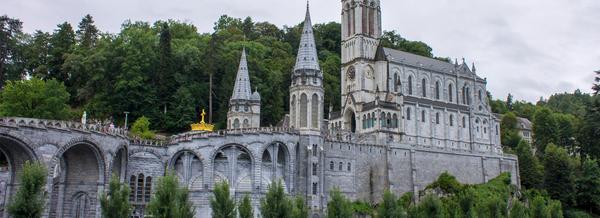
Book Review: Marian Shrines of France
 The Marian Shrines of France covers the four major 19th century Marian shrines in France, Rue du Bac (1830), La Salette (1846), Lourdes (1858), and Pontmain (1871), and is relevant today, even in the 21st century, because many of the problems then afflicting humanity have only grown worse, and a genuine Marian devotion would seem to be the best safeguard for the Church as a whole in these troubled times.
The Marian Shrines of France covers the four major 19th century Marian shrines in France, Rue du Bac (1830), La Salette (1846), Lourdes (1858), and Pontmain (1871), and is relevant today, even in the 21st century, because many of the problems then afflicting humanity have only grown worse, and a genuine Marian devotion would seem to be the best safeguard for the Church as a whole in these troubled times.
It begins by putting the apparitions in their historical context, that is post-revolutionary France, and looks back at the rich Catholic history of this, the “eldest daughter of the Church.” The situation at the beginning of the 19th century was not good, as anti-Christian forces, and particularly materialism, began to grow in strength, but along with great saints such as St John Vianney, and, at the beginning of the 20th century, St Thérèse, these four Marian apparitions, and particularly Lourdes, played a great part in keeping France Catholic.
A series of short chapters then follow, which deal with differing aspects of the apparitions, but with the theme of the importance of Mary’s role, before the four sections on the apparitions begin.
The first of these concerns the apparitions at Rue du Bac to Catherine Labouré in 1830, and these can really be said to have begun the modern Marian era. The events are recounted and then their meaning is explained, and particularly that of the role of the Miraculous Medal in the conversion and cure of many persons. The symbolism of the medal is also explored and the way in which it pointed to both Mary’s Immaculate Conception and her mediating role.
Their is also a practical and spiritual emphasis in the recounting of the conversion of the Jewish banker Alphonse Ratisbonne, and of St Maximilian Kolbe’s use of the medal to convert souls.
The story of La Salette is one of the basic Christian precepts being reintroduced into an area of south eastern France which had almost forgotten it was Catholic. Things had reached such a low ebb that blasphemy and Sabbath breaking were widespread. Yet within a few years of the apparition of Mary in 1846, a marvellous change had come over the whole region. Further short chapters explore a variety of aspects of the apparitions and their subsequent history and are very satisfying.
However, it was Lourdes that would hold the primary place in French Marian apparitions, particularly after the discovery of the miraculous spring which very quickly became world-famous for the wonderful cures God worked through it. Again there is a good account of the basic story, plus further sections on lesser known aspects, including theological reflections and some astonishing accounts of healings. Bernadette’s later life and chapters on the Immaculate Conception and the Eucharist, amongst others, round off the section on Lourdes.
The last part of the book deals with the little known apparition at Pontmain, which took place at the height of the Franco-Prussian war. This somewhat resembles Knock in that Our Lady only appeared for a few hours in the nighttime sky, and said nothing, although some words of consolation did appear at her feet on a white band. The result was that the area was saved from the devastation of the approaching Prussian army.
In sum, this is an excellent little book, which not only recounts the basics of each apparition but also puts them in their historical context. It also approaches them from a number of angles both spiritual and theological and in short is highly recommended. It is very well illustrated and thus an excellent introduction to the 19th century French Marian apparitions.
- Donal Anthony Foley
